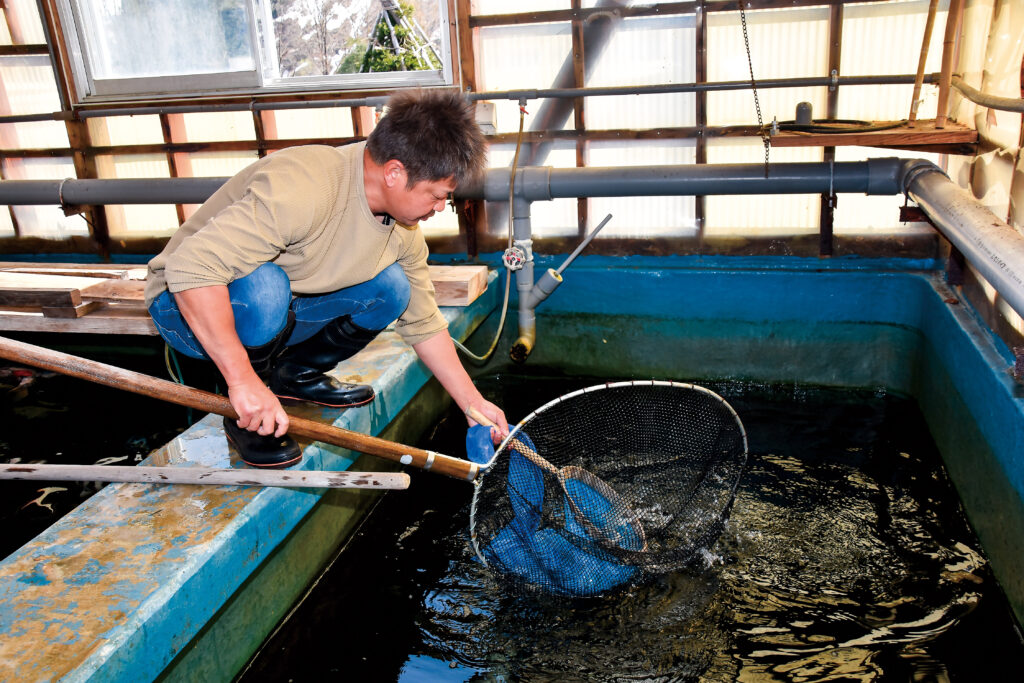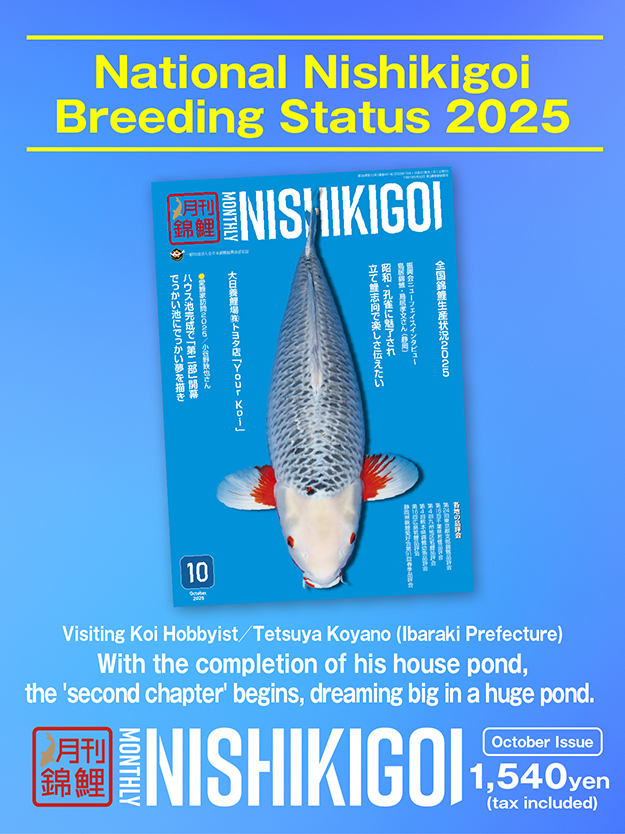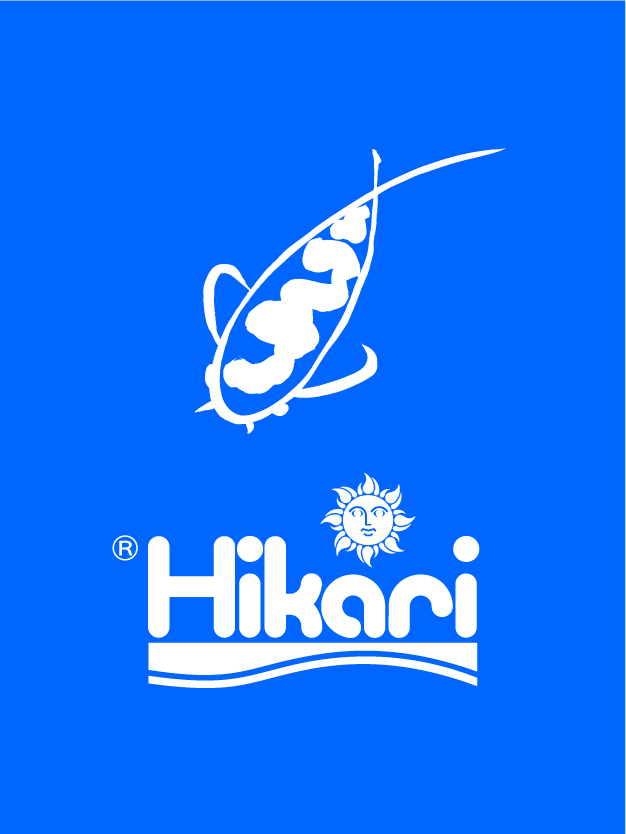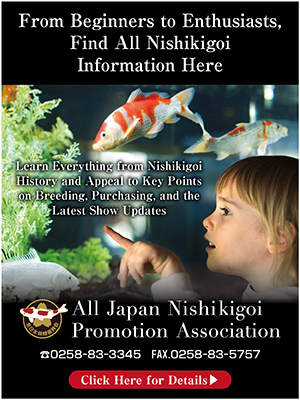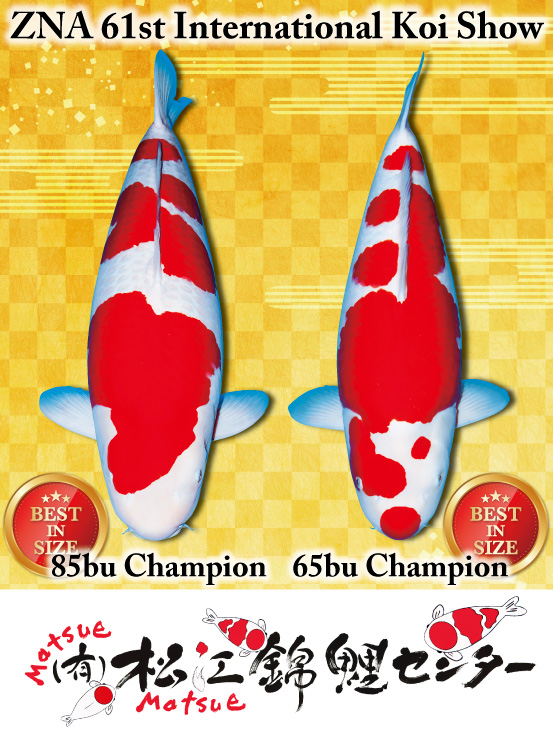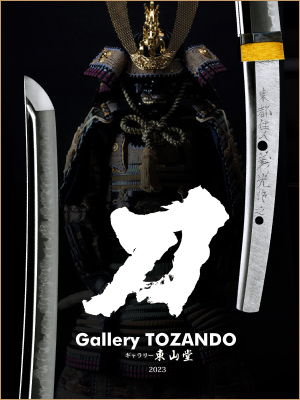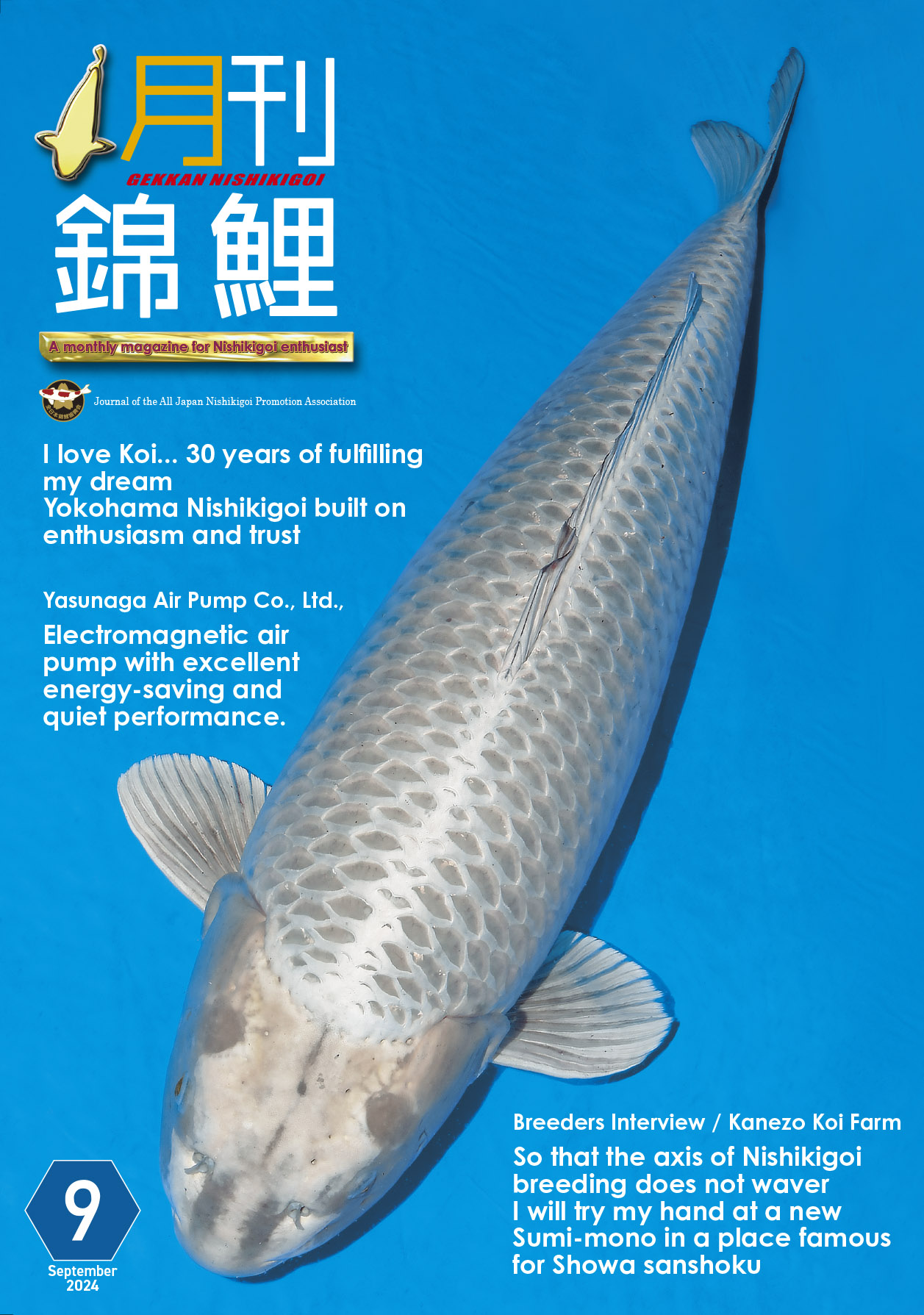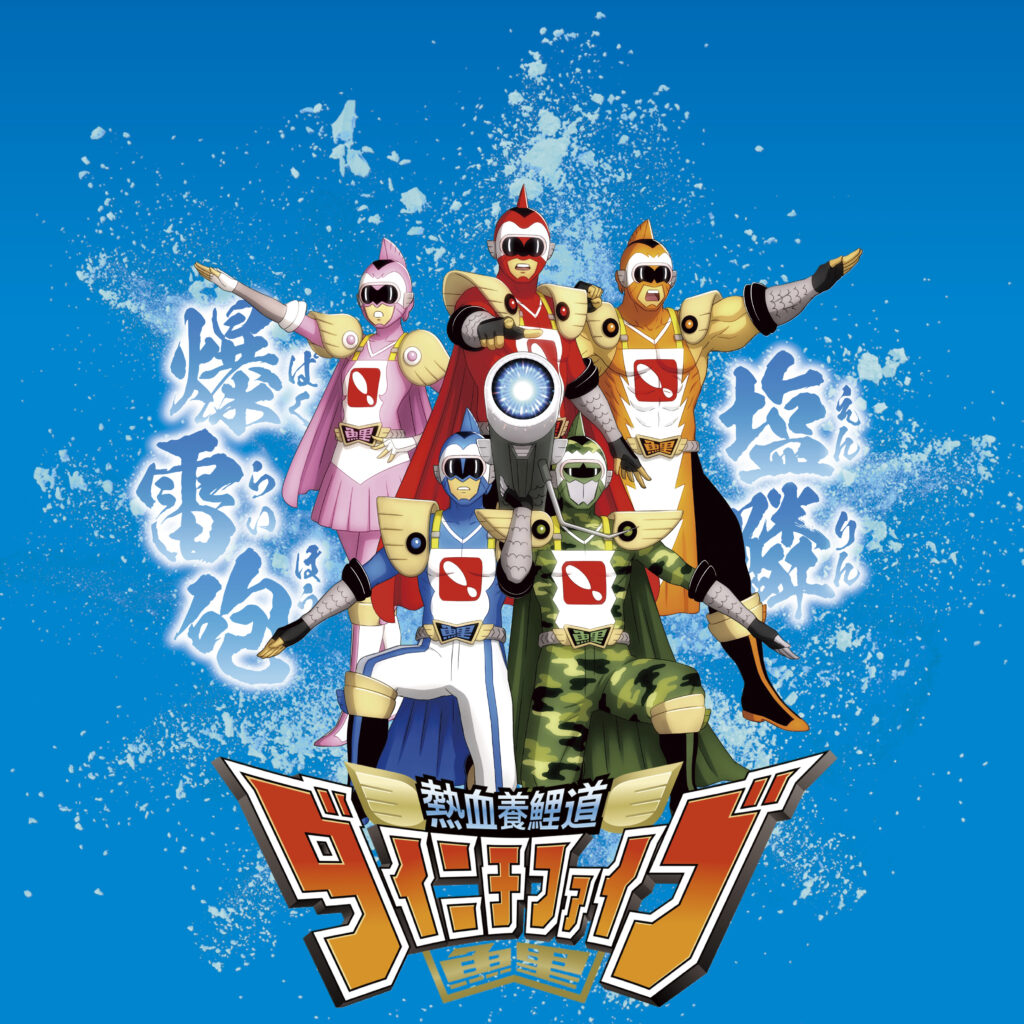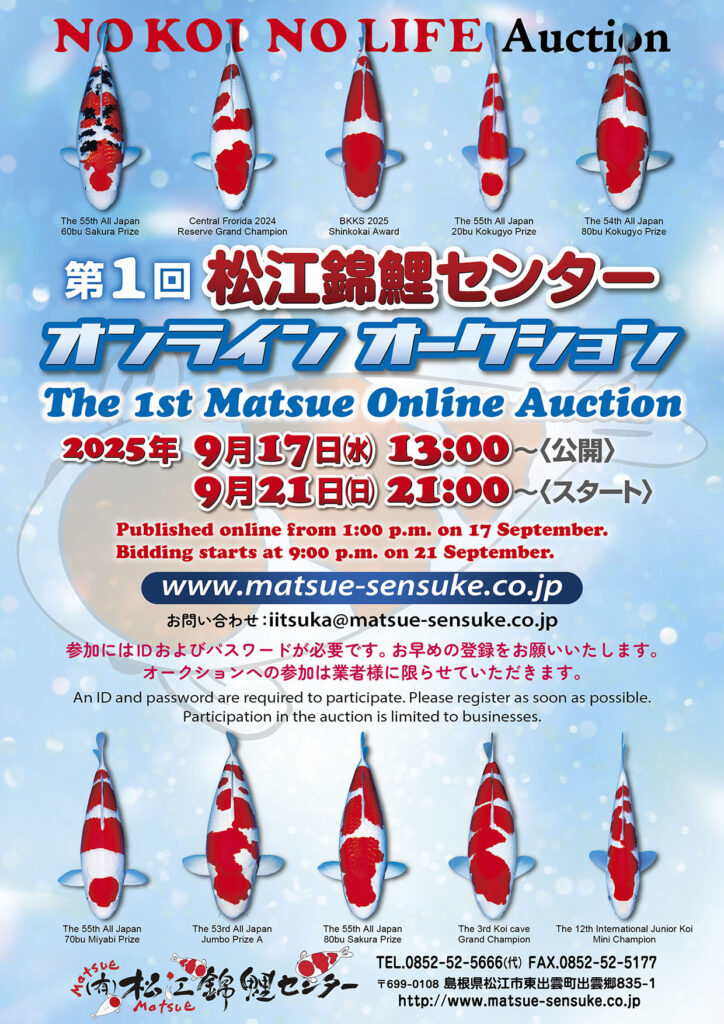Interview Naoto Kobayashi, Marusen Kobayashi Koi Farm
The cool and imposing Kogane Ochiba with aragoke.
— In Niigata, where many unique koi are produced, relatively few breeders still create Aragokegoi. What was the motivation behind your decision to develop such koi?
Kobayashi: I didn’t precisely aim to create aragoke. Initially, I wanted to create Kogane Ochiba. And I brought the lineage Toshinobu was working on and crossed them with other koi with scales. In the first selection, there were only a few Kogane Ochiba with scales, so there were many Doitsugoi instead. I was surprised and wondered, ‘What’s this?’ But I was interested, so I kept them during the second and third selections and ended up with many aragoke.
— When I see aragoke lined up uniformly, I can see they have been carefully selected. When did you start breeding them?

The Kogane Ochiba bred by Marusen Kobayashi Koi Farm

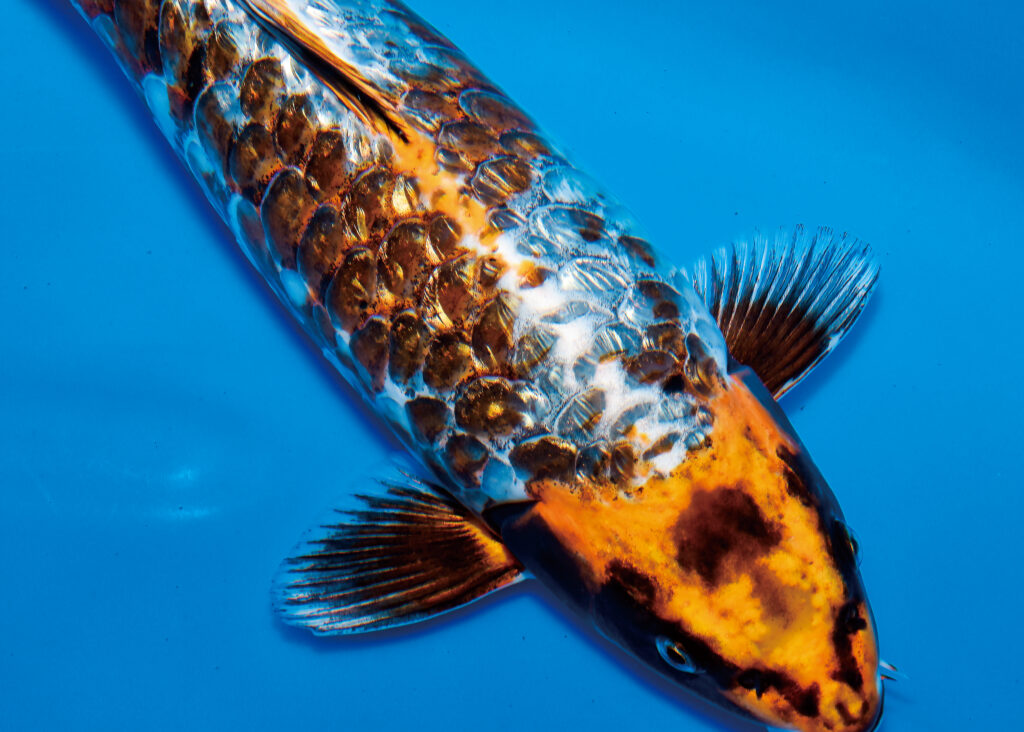
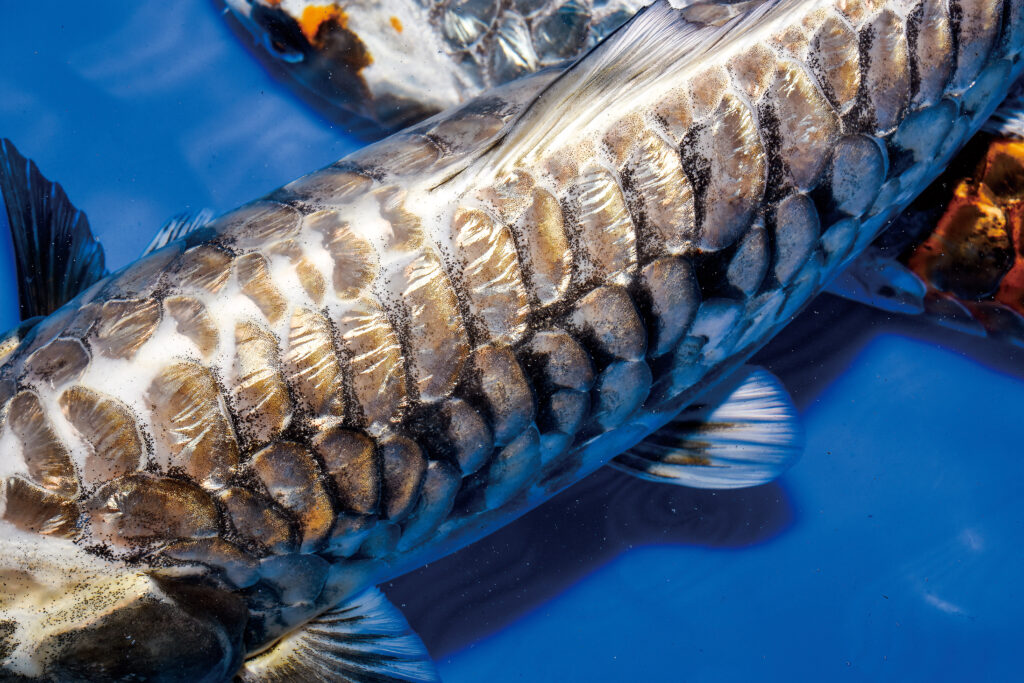


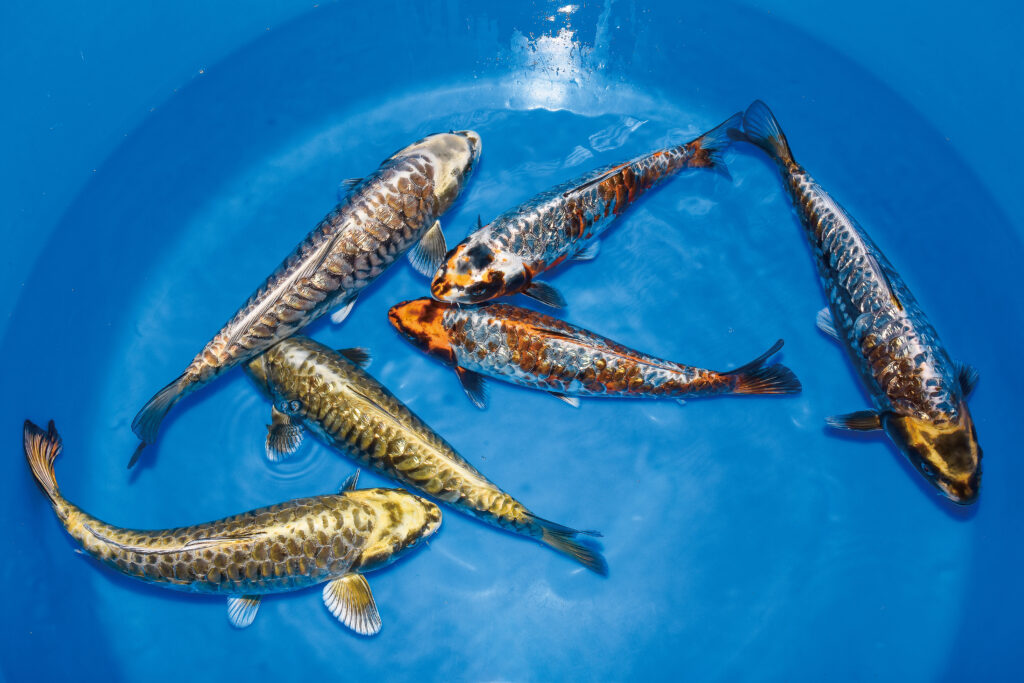
Kobayashi: Since the koi I have now are two years old, I started making them about two years ago.
— In the Ochiba lineage, does it result in different variations?
Kobayashi: Not only variations but also changes. During tosai, they are generally quite dark, so they don’t look beautiful. However, as they reach two years old, that darkness starts to fade away, and orange or yellow patterns become more apparent.
They look beautiful because of the contrast.
— What were the reactions from domestic and overseas customers?
Kobayashi: At tosai, Aragokegoi are pretty dark, so sometimes I get reactions like, ‘What’s this strange thing?’ There are few Japanese customers, but some like aragoke, so they buy quite a few.
— You mentioned that you started breeding them last year. Did you experiment with different combinations of parent koi or increase spawning as well?
Kobayashi: No, it’s been the same combination with just one female. However, tosai are darker, maybe too dark this year and have a slightly different vibe. The question is, how they will change as they reach two years old?
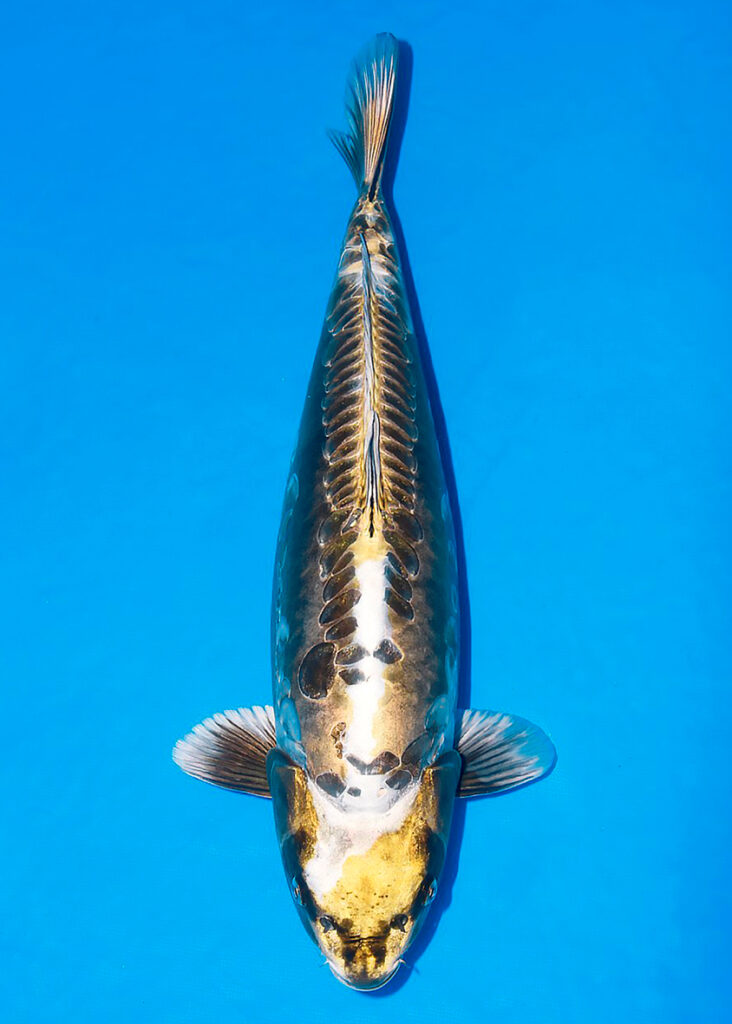


Doitsu Kogane Ochiba was exhibited at the 2022 Niigata Auction.

— What criteria do you use for selection?
Kobayashi: If scales are on the lateral line and the pattern looks good, I’ll keep it. However, I generally don’t keep ones with incomplete patterns. Also, if the dorsal scales are in a single row, they won’t differ much from Doitsugoi, and I do not select those that are too beautiful. Last year, I wanted to see what would happen when they turned two years old, so I purposely kept the ones with rough, chaotic scales. When they were two years old, I was surprised to see that the texture of the scales looked just like a snake.
— How many two years’ koi did you leave?
Kobayashi: I left around a little over 100, and now there are roughly 20.
— Colourful karaoke, such as the orange (Photo 6) and the yellow (Photo 7) previously sold by Sensuke Co., Ltd., were also the bloodline from Kogane Ochiba?
Kobayashi: Yes, that’s correct. The orange, yellow, silver, and other colourful varieties, including Aokiya’s Kouryu, have a yellow body, but mine are slightly different from his yellow.
— If various Aragokegoi arise, we can expect to pay even more attention. Will you be increasing the variations in the future?
Kobayashi: I’d like to, but it can be challenging with everything I want. Kogane Ochiba is a variety that I like. Seeing Maruhiro(Maruhiro Koi Farm) and Marusei (Marusei Koi Farm) presenting them at the Koi Show was impressive, and it made me want to try creating them.
— Among the various types of Kawarigoi, aragoke is particularly divisive regarding preferences. What is the appeal of aragoke for you?
Kobayashi: The flashy aragoke is appealing to me. When silver is infused into the large scales, it creates a flashy appearance utterly distinct from ordinary koi. Moreover, as the body grows, the scales also increase, give it a powerful appearance.
The koi previously sold by Sensuke (Photos 6 and 7) especially appear flashy with added silver. I am producing them with Kogane Ochiba, so the colour is more subdued or understated overall. However, I will continue improving and creating koi with brighter colours while considering some bloodline changes.
.jpg)
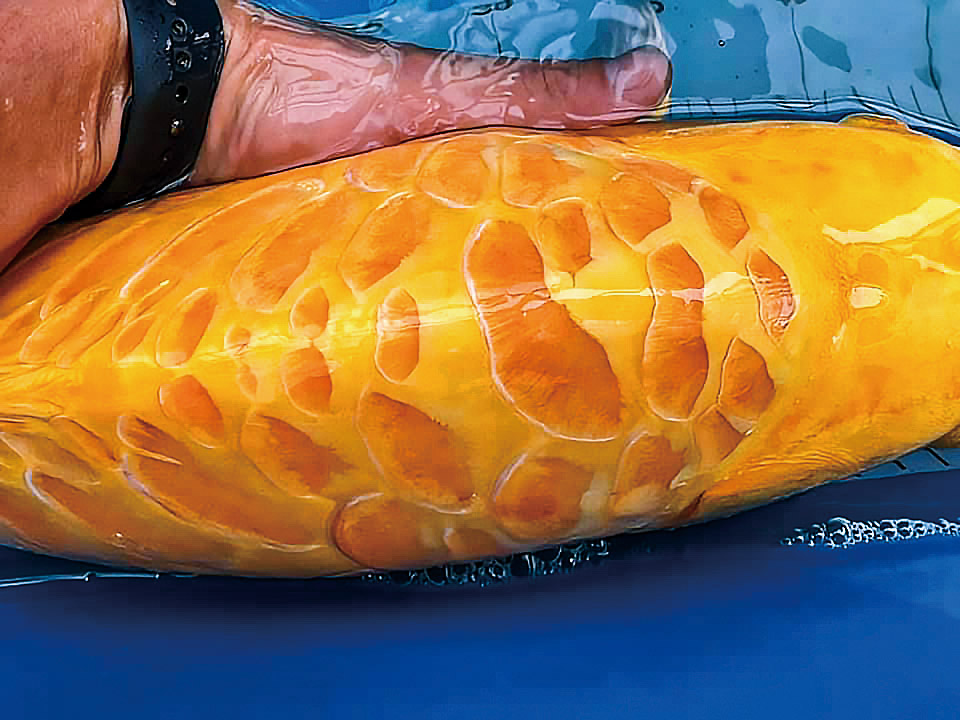
(6) (7) Orange and Yellow “Aragokekoi”
